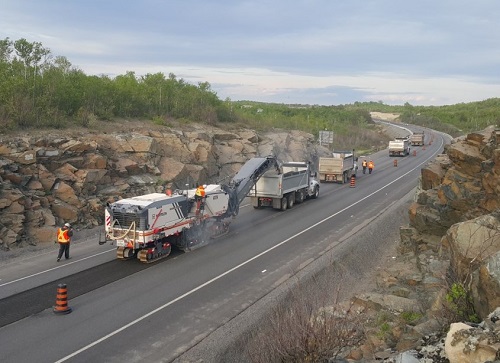 Tuesday, May 7, 2024
Tuesday, May 7, 2024  Tuesday, May 7, 2024
Tuesday, May 7, 2024 
Having finished rehabilitating a five-kilometre stretch of Highway 17 days ahead of schedule, it’s clear a relatively new-to-Canada 3D scanning model is living up to its hype.
The Highway 17 project was started on June 1 near the southwest bypass from Hannah Lake to Highway 69. Construction crews finished work on June 4.
In the North, it’s said there are two seasons: winter and construction. Northerners are in the thick of construction season right now, and road projects are in full swing. No matter where you go, motorists are sure to be stuck in a lineup of traffic at some point, perhaps for long periods of time. For Northerners, it has become commonplace.
What set this particular project apart from others is the fact it utilized a three-dimensional milling model established by Control Systems CA, a Czech company that is making inroads in Canada and has completed similar projects around the world, said spokesperson Antonio Bauce, who works for the Consulate General of the Czech Republic in Toronto.
Bauce said the technology has the potential to cut construction time by 25 per cent, reducing the amount of time motorists have to wait in lineups, as well as cost and carbon footprint of road rehabilitation projects.
Essentially, by using this model, construction companies can ensure roadways are milled to their optimal crossfall prior to resurfacing, allowing for proper drainage of water off the pavement, and will also ensure only necessary asphalt is removed during rehabilitation, effectively reducing construction time and excessive surplus materials. It all sounds rather technical, but really it’s a simple idea, said Bauce.
“Prior to any road work, this technology can run scans to provide an in-depth profile of the road, down to a millimetre precision, and will detail such issues as soft spots or potential risks for water pooling,” said Bauce.
Once Control Systems CA acquires that data through its scans, that information is relayed to the milling operators and machines automatically.
Check out the video gallery here